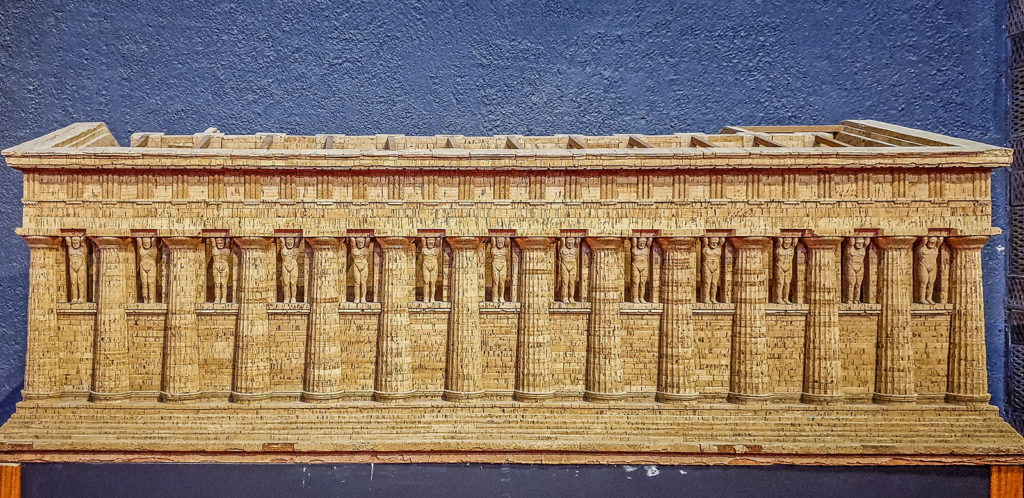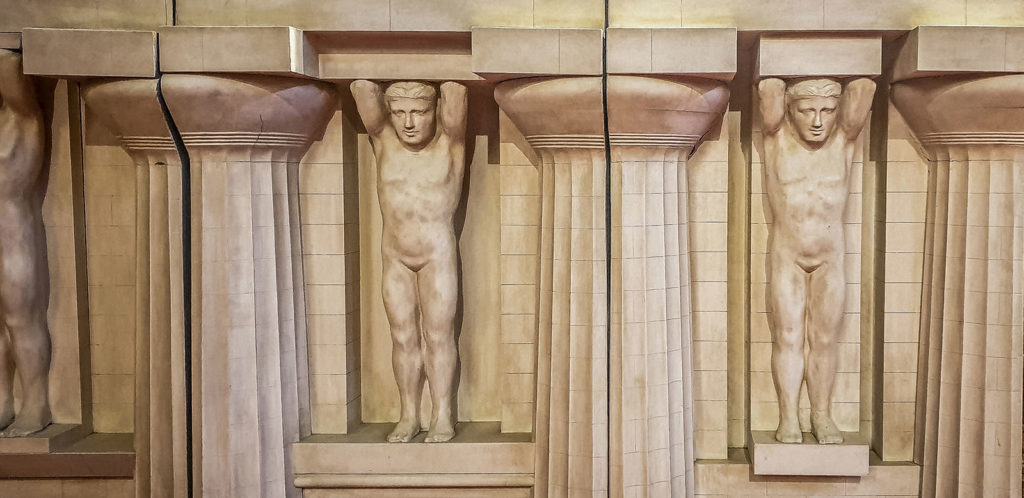The Temple of Olympian Zeus is considered the largest in the whole of Sicily: 30 metres high, 112 metres long and 56 metres wide, it celebrated Agrigento’s victory over the Carthaginians.

Such majestic proportions made it a veritable manifesto for the propaganda of the tyrant Theron’s power. Construction work on the building lasted over seventy years, but was abruptly interrupted: According to
Diodorus Siculus
, a Siceliot historian, or Greek of Sicily, the cause of this interruption was probably the Carthaginians, who, returning to Sicily in 406 BC, conquered and destroyed the city. The enormous structure rested on a
basement
of five steps.
Like the temples of Demeter and Asclepius, the sacred building dedicated to the king of the gods was not surrounded by columns. In fact, the Temple of Zeus had semi-columns inserted as pillars on the wall, seven on the short sides and fourteen on the long sides. Between one half column and another stood the
telamons
,
gigantic statues
towering 7.65 metres high, with their arms bent behind their heads to
symbolically support the temple's architrave
.

Not far from the front, facing east like all Greek temples, you can still see the basement of the colossal altar : it measured 54 by 17 metres! It was in this sacred space that the terrible sacrifices in honour of the god took place, including the
hecatomb
, the sacrifice of a hundred oxen.
The temple’s return to grandeur is unfortunately only hypothetical. During the Middle Ages the building’s stone blocks were taken away to build the palaces and churches of Agrigento, while in the 18th century, those that remained were used for the Port of Porto Empedocle.